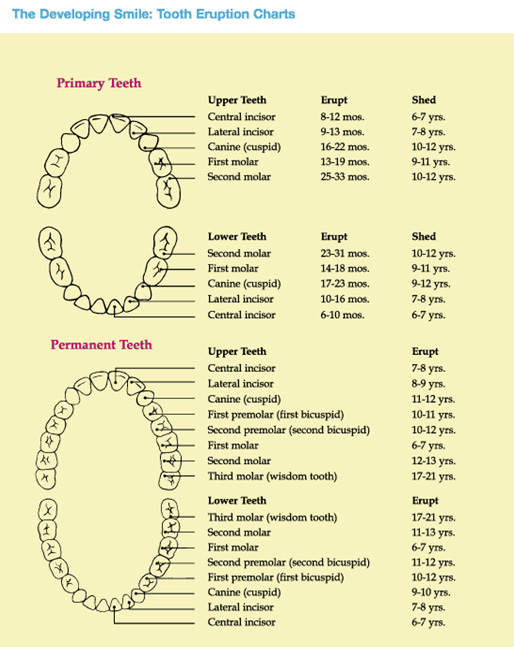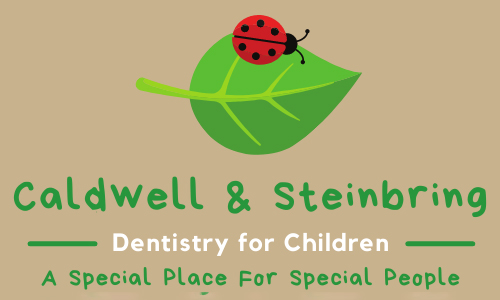Emergencies
 Accidents can happen. As such, our pediatric and special needs pediatric dentists, Dr. Larry Caldwell and Dr. Derek Steinbring, are here to help if your little one ever has an oral injury or dental emergency.
Accidents can happen. As such, our pediatric and special needs pediatric dentists, Dr. Larry Caldwell and Dr. Derek Steinbring, are here to help if your little one ever has an oral injury or dental emergency.
Several pediatric dental emergencies are listed below with at-home, step-by-step treatment instructions. If your child experiences a dental emergency that is not listed below, or you are unsure of how to treat an injury, do not hesitate to call us so that we can assist you over the phone. You can also book an appointment for professional treatment in our Sugar Land, TX office.
Broken or Displaced Teeth
If your child breaks or displaces a tooth, follow the instructions below and contact our Sugar Land, TX dentist immediately.
Step One: The first thing you should do is use a clean gauze with warm water to clean the blood, dirt, and other debris from your child's face. Do not use rubbing alcohol or hydrogen peroxide, as these substances harm the tissue and delay healing (not to mention, they'll sting a lot!). After the wound is cleaned, apply a cold compress on the cheek next to the injured tooth.
Step Two: Next you'll need to check to see how bad the displacement is. If the tooth is not pushed into the gum, have your child very gently bite their teeth together. And if you're able to, carefully move the tooth back to its correct position. Do not move or touch the tooth if it has been pushed into the socket or gum. If that is the case, call our office right away for an emergency visit with one of our pediatric dentists.
Other Things to Note: If your child's tooth is broken, gently cover the tooth with sugarless gum or paraffin so that the sharp edge doesn't damage any tissue. You may give your child Tylenol or Motrin according to their weight and age to alleviate pain. But, regardless of the specific damage, make sure to contact our office immediately if your child breaks or displaces a tooth so we can take care of the problem as soon as possible.
Knocked Out Tooth
A dental avulsion, or a knocked out tooth, is the complete displacement of a tooth from its socket. While tooth displacement as described in the above section is a partial displacement, dental avulsion happens when an entire tooth (root and all) is removed from the mouth due to trauma.
If a baby tooth is knocked out, we do not re-implant it due to potential for infection and adverse effects on the incoming permanent teeth. If you cannot tell the whether the avulsed tooth is primary or permanent, treat it as a permanent tooth following the instructions below.
Step One: A dental avulsion is a very serious dental emergency. Time is vital in these situations, because the tooth can sometimes be replanted successfully if treated within one to two hours. If your child completely loses a tooth call us immediately. If it is after normal business hours follow the instructions on our answering machine to utilize our after-hours contact information.
Step Two: Keep your child calm and locate the lost tooth if you can. If found, hold the tooth by the crown (the top portion of the tooth) and avoid touching the root. Do not rinse the tooth under water, as this can damage or destroy the fibers that connect the tooth to the socket. Shake the tooth free of all debris instead.
Step Three: If you can, very carefully place the tooth back into the socket and have your child bite down on a handkerchief to hold it in position. If no one is comfortable doing this or your child is not cooperating, place the tooth in a glass of milk, or a clean wet gauze or cloth.
Lacerated Lip or Tongue
If your child lacerates their lip or tongue, our staff can help determine the severity of the injury and whether or not your child needs stitches.
Immediately after the laceration, your child may experience vigorous bleeding. Use a clean gauze to apply pressure to the wound for 15 to 20 minutes or until bleeding stops. Once the bleeding has subsided, check to see if your child has any missing, broken, or displaced teeth. If a tooth was knocked out, read the above section on dental avulsion for instructions on what to do. If the injured area swells, apply a cold compress for 20 minutes, remove for 20 minutes, and repeat as necessary.
Deep lacerations may require stitches to bring the tissue together and properly treat the wound. If your child's laceration appears severe, call our Sugar Land, TX office so we can help you determine if sutures are necessary.
Prolonged or Recurrent Bleeding After Extraction
What we want to stress first and foremost is not to be alarmed if there appears to be a large amount of blood oozing from the extraction site. Blood mixes with saliva and can make it look like there is more blood than there actually is. If the site is bleeding more aggressively than just oozing (characterized by bright red blood), or if your child is alarmed by the blood, then have your child bite down on a clean square gauze on the bleeding site for 30 minutes. Do not let your child spit or move the gauze while he or she is biting down on it. If the bleeding does not stop after an hour, contact our office so that we can determine if there is a problem with the extraction site.
***Please note: after your child's extraction, he or she cannot rinse or drink from a straw for 24 hours because doing so could disrupt a forming blood clot at the site. Normal drinking, however, is fine and usually will not affect the healing area.
Toothache
Toothaches are not uncommon in children. Before contacting our office, try to relieve your child of pain through these at-home methods:
- Use dental floss to remove food that is trapped in or around the affected tooth.
- Have your child vigorously rinse with warm water to remove any debris.
- If the area around the tooth is swollen, apply a cold compress to the outside of your child's cheek. Place the cold compress on the cheek for 20 minutes, remove for 20 minutes, and repeat as necessary. Avoid using heat.
- Give your child Tylenol or Motrin according to their weight and age. Do not place Aspirin on or near the tooth.
If these methods do not improve your child's pain, or your child complains of a toothache that keeps them up at night, then call our practice for an appointment with one of our pediatric and special needs pediatric dentists.
Mouth Ulcers, Canker Sores, Fever Blisters, & Cold Sores
Mouth Ulcers & Canker Sores
Mouth ulcers and canker sores are both painful sores that appear on the inside of your mouth. Mouth ulcers are usually the result of damage caused by biting the inside of your cheek or tongue. Canker sores, meanwhile, are small, shallow sores that appear due to a wide variety of reasons primarily associated with stress or tissue injury. If your child develops a mouth ulcer or canker sore, avoid feeding him or her spicy or acidic foods as these can cause pain to the affected area.
To temporarily relieve your child of pain from an ulcer or a canker sore on an as-needed basis, you can use an over-the-counter medicine called Orabase (either plain or the kind with Benzocaine) and apply a moderate amount to the affected area. For a home remedy, many parents find that applying honey to the area works well too.
Fever Blisters & Cold Sores
The terms "fever blisters" and "cold sores" are used interchangeably with one another to describe herpes of the mouth. Unlike mouth ulcers or canker sores, these sores are highly contagious, so you need to use gloves when working around them. Have your child wash his or her hands frequently and avoid touching the eyes to prevent the virus from spreading.
There are a few over-the-counter ointments that can help alleviate cold sore symptoms while they heal. You can also speak with your child's primary care physician if the outbreaks are unusually frequent or severe. As with mouth ulcers and canker sores, avoid feeding your child acidic or spicy foods because these can cause fever blisters to become more painful.
Problems with Braces & Orthodontic Appliances
Immediately After an Appointment
If your child has just had an orthodontic appliance placed in his or her mouth within the last week, slight discomfort or generalized "aching" is very common. This usually subsides within two to three days of the initial placement. To ease discomfort, Tylenol or Motrin can be given with water in accordance with your child's weight and age. Rinsing with a glass of warm salt water (½ teaspoon of salt) or holding the warm glass to their mouth can alleviate pain and discomfort as well. Our kids' dentists also recommend a semi-soft food diet until your child can chew comfortably again.
Problems with Wires & Braces
If your child has a protruding wire that is irritating the tissue, use a soft, blunt item such as a pencil eraser to bend the wire away from the tissue. If the wire cannot be bent, cover it with a small cotton ball or a piece of paraffin wax. Avoid removing any wire that is embedded in the gum, tongue, or cheeks as this could cause further damage. This type of issue needs to be handled by the dentist or orthodontist who installed the appliance.
Should a wire or other appliance loosen or break and you cannot remove it easily, call the dentist or orthodontist that placed the appliance. If the appliance was placed by one of our pediatric dentists (for example an expander), call our Sugar Land, TX office for assistance or to book an appointment to correct the problem.
For any general questions about the dental appliances installed by our pediatric dentist, you can read our appliances instructions online or call our office for more information.
Inflamed or Irritated Gums
One of the most common causes of gum bleeding and inflammation is simply poor oral hygiene. Daily brushing and flossing can remove plaque and restore the health of your child's gums.
Another common cause of irritated gums in children is trauma. A blow to the mouth can easily cause swelling and bleeding in the gums. Keep your child's gums and teeth clean, reduce the possibility of infection, and relieve discomfort by rinsing with warm salt water (½ teaspoon of salt).
Warm salt water rinses should also be used if your child's gums are red, sore, or swollen, regardless of whether or not there was recent trauma to the area. To help control swelling, apply a cold compress to the cheek for 20 minutes, remove for 20 minutes, and repeat as necessary. Control bleeding by applying pressure directly to the injured gum using a clean piece of gauze.
Call our children's dentistry if your child experiences chronic bleeding, as this could be an indication of a more serious dental issue.
Tooth Eruption Pain
 After losing the primary teeth, erupting permanent teeth can cause pain and discomfort in the mouth. This pain is common and usually subsides within a few days. For incoming molars, the pain may last about a week, possibly longer. If your child experiences prolonged pain that is unusual for the teeth that are growing in, call our office to schedule a quick check up so we can determine the exact cause of the pain.
After losing the primary teeth, erupting permanent teeth can cause pain and discomfort in the mouth. This pain is common and usually subsides within a few days. For incoming molars, the pain may last about a week, possibly longer. If your child experiences prolonged pain that is unusual for the teeth that are growing in, call our office to schedule a quick check up so we can determine the exact cause of the pain.
There are several home remedies you can use to relieve your child of pain and discomfort. For a temporary fix, you can place a popsicle or cold compress on the site of the growing permanent tooth. Place the cold compress on the site for 20 minutes, then remove it for 20 minutes, and repeat as necessary. Once your child is age appropriate, saline rinses can help to decrease swelling. Over-the-counter remedies can also help.
Our pediatric dentist recommends that you never place Aspirin directly on your child's tooth. However, Tylenol or Motrin are safe and can be administered based on your child's weight and age.
Eruption Dates for Primary & Permanent Teeth
All children are different, and their teeth development is no exception. The chart below shows average primary and permanent teeth eruption times, but don't be alarmed if your child's teeth develop earlier or later than the timelines listed below. A year on either side of the average eruption times is not unusual.

Safeguarding Your Child's Smile
The team at Caldwell & Steinbring Dentistry For Children is committed to helping your child smile brighter. Should you ever need our dental/oral assistance, or have questions about the issues listed above, please don't hesitate to contact us. We're always glad to help you over the phone or in person at our Sugar Land, TX office.
